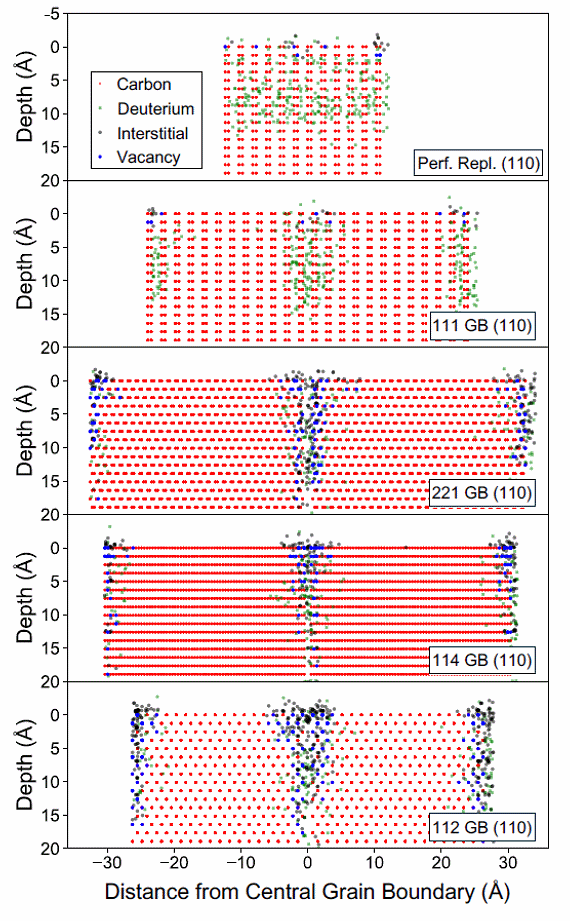 Diamond as a Plasma-Facing Protective Coating in Fusion Reactors
Diamond as a Plasma-Facing Protective Coating in Fusion Reactors
The plasma-facing material (PFM) is the material that lines the inside of the first wall and divertor of a nuclear fusion reactor. The primary role of a PFM is to protect more delicate components of the reactor from high thermal loads and low-energy ion irradiation. Such materials will also need to endure high fluences of fast neutrons, but typically will do little to protect the other components of a wall. Diamondís intrinsic hardness, excellent thermal properties, resistance to radiation damage, semiconducting properties and transparency, make it a material of interest for numerous applications within fusion energy. These applications include PFMs, windows, hydrogen permeation barriers, as well as neutron and tritium detectors. All of these potential applications involve the interaction of diamond with hydrogen isotopes on some level. |
 Plasma-facing wall in JET. [Image: UKAEA] |
Related Papers
- J.A. Pittard, N.A. Fox, A. Hollingsworth, M.Y. Lavrentiev, A. Wohlers and Y. Zayachuk, "Deuterium retention in CVD diamond: Combined experimental and computational study", Fus. Engineer. and Des., 188 (2023) 13403. [doi: 10.1016/j.fusengdes.2022.113403]
- J.A. Pittard, M.Y. Lavrentiev, N.A. Fox, "Simulated bombardment of diamond with hydrogen isotopes", IEEE Trans. Plasma Sci., 52 (2024) 3674-3679. [doi: 10.1109/TPS.2024.3435521]
- J.A. Pittard, M.Y. Lavrentiev and N.A. Fox, "Simulated hydrogen diffusion in diamond grain boundaries", Diamond Relat. Mater. 149 (2024) 111665. [doi: 10.1016/j.diamond.2024.111665]

